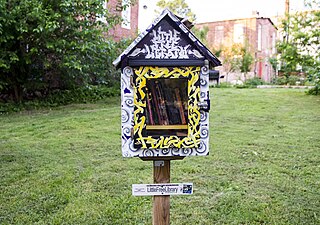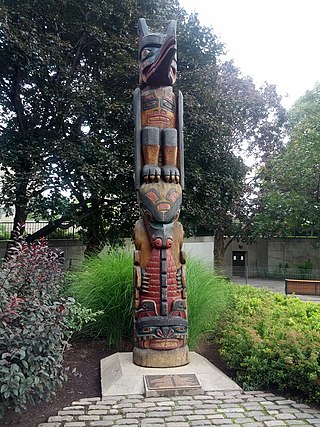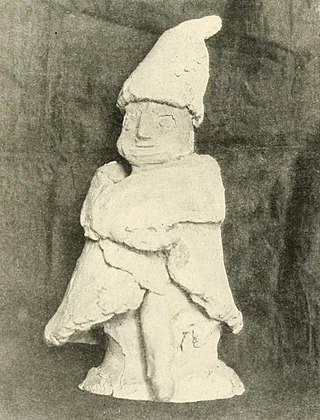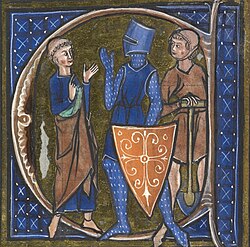Animism is the belief that objects, places, and creatures all possess a distinct spiritual essence. Animism perceives all things—animals, plants, rocks, rivers, weather systems, human handiwork, and in some cases words—as being animated, having agency and free will. Animism is used in anthropology of religion as a term for the belief system of many Indigenous peoples in contrast to the relatively more recent development of organized religions. Animism is a metaphysical belief which focuses on the supernatural universe : specifically, on the concept of the immaterial soul.

David Émile Durkheim was a French sociologist. Durkheim formally established the academic discipline of sociology and is commonly cited as one of the principal architects of modern social science, along with both Karl Marx and Max Weber.

The sociology of knowledge is the study of the relationship between human thought, the social context within which it arises, and the effects that prevailing ideas have on societies. It is not a specialized area of sociology. Instead, it deals with broad fundamental questions about the extent and limits of social influences on individuals' lives and the social-cultural basis of our knowledge about the world. The sociology of knowledge has a subclass and a complement. Its subclass is sociology of scientific knowledge. Its complement is the sociology of ignorance.
Anthropology of religion is the study of religion in relation to other social institutions, and the comparison of religious beliefs and practices across cultures. The anthropology of religion, as a field, overlaps with but is distinct from the field of Religious Studies. The history of anthropology of religion is a history of striving to understand how other people view and navigate the world. This history involves deciding what religion is, what it does, and how it functions. Today, one of the main concerns of anthropologists of religion is defining religion, which is a theoretical undertaking in and of itself. Scholars such as Edward Tylor, Emile Durkheim, E.E. Evans Pritchard, Mary Douglas, Victor Turner, Clifford Geertz, and Talal Asad have all grappled with defining and characterizing religion anthropologically.

Conflict theories are perspectives in political philosophy and sociology which argue that individuals and groups within society interact on the basis of conflict rather than agreement, while also emphasizing social psychology, historical materialism, power dynamics, and their roles in creating power structures, social movements, and social arrangements within a society. Conflict theories often draw attention to power differentials, such as class conflict, or a conflict continuum. Power generally contrasts historically dominant ideologies, economies, currencies or technologies. Accordingly, conflict theories represent attempts at the macro-level analysis of society.

Structural functionalism, or simply functionalism, is "a framework for building theory that sees society as a complex system whose parts work together to promote solidarity and stability".

A totem is a spirit being, sacred object, or symbol that serves as an emblem of a group of people, such as a family, clan, lineage, or tribe, such as in the Anishinaabe clan system.
In 18th- and 19th-century German philosophy, a zeitgeist is an invisible agent, force, or daemon dominating the characteristics of a given epoch in world history. The term is usually associated with Georg W. F. Hegel, contrasting with Hegel's use of Volksgeist "national spirit" and Weltgeist "world-spirit". Its coinage and popularization precede Hegel, and are mostly due to Herder and Goethe. Other philosophers who were associated with such concepts include Spencer and Voltaire.
Ritualization refers to the process by which a sequence of non-communicating actions or an event is invested with cultural, social or religious significance. This definition emphasizes the transformation of everyday actions into rituals that carry deeper meaning within a cultural or religious context. Rituals are symbolic, repetitive, and often prescribed activities that hold religious or cultural significance for a certain group of people. They serve various purposes: promoting social solidarity by expressing shared values, facilitating the transmission of cultural knowledge and regulating emotions.

In the social sciences, social structure is the aggregate of patterned social arrangements in society that are both emergent from and determinant of the actions of individuals. Likewise, society is believed to be grouped into structurally related groups or sets of roles, with different functions, meanings, or purposes. Examples of social structure include family, religion, law, economy, and class. It contrasts with "social system", which refers to the parent structure in which these various structures are embedded. Thus, social structures significantly influence larger systems, such as economic systems, legal systems, political systems, cultural systems, etc. Social structure can also be said to be the framework upon which a society is established. It determines the norms and patterns of relations between the various institutions of the society.

A household deity is a deity or spirit that protects the home, looking after the entire household or certain key members. It has been a common belief in paganism as well as in folklore across many parts of the world.

Alfred Reginald Radcliffe-Brown, FBA was an English social anthropologist who helped further develop the theory of structural functionalism.
Collective consciousness, collective conscience, or collective conscious is the set of shared beliefs, ideas, and moral attitudes which operate as a unifying force within society. In general, it does not refer to the specifically moral conscience, but to a shared understanding of social norms.

Sociology as a scholarly discipline emerged, primarily out of Enlightenment thought, as a positivist science of society shortly after the French Revolution. Its genesis owed to various key movements in the philosophy of science and the philosophy of knowledge, arising in reaction to such issues as modernity, capitalism, urbanization, rationalization, secularization, colonization and imperialism.
Humanistic sociology is a domain of sociology which originated mainly from the work of the University of Chicago Polish philosopher-turned-sociologist, Florian Znaniecki. It is a methodology which treats its objects of study and its students, that is, humans, as composites of values and systems of values. In certain contexts, the term is related to other sociological domains such as antipositivism. Humanistic sociology seeks to shed light on questions such as, "What is the relationship between a man of principle and a man of opportunism?"

Communitas is a Latin noun commonly referring either to an unstructured community in which people are equal, or to the very spirit of community. It also has special significance as a loanword in cultural anthropology and the social sciences. Victor Turner, who defined the anthropological usage of communitas, was interested in the interplay between what he called social 'structure' and 'antistructure'; Liminality and Communitas are both components of antistructure.

Solidarity or solidarism is an awareness of shared interests, objectives, standards, and sympathies creating a psychological sense of unity of groups or classes. Solidarity does not reject individuals and sees individuals as the basis of society. It refers to the ties in a society that bind people together as one. The term is generally employed in sociology and the other social sciences as well as in philosophy and bioethics. It is a significant concept in Catholic social teaching and in Christian democratic political ideology. Although being interconnected concepts, solidarity, by contrast to charity, takes a systems change approach.

Social movement theory is an interdisciplinary study within the social sciences that generally seeks to explain why social mobilization occurs, the forms under which it manifests, as well as potential social, cultural, political, and economic consequences, such as the creation and functioning of social movements.
Collective effervescence (CE) is a sociological concept coined by Émile Durkheim. According to Durkheim, a community or society may at times come together and simultaneously communicate the same thought and participate in the same action. Such an event then causes collective effervescence which excites individuals and serves to unify the group.

Chinese ancestor veneration, also called Chinese ancestor worship, is an aspect of the Chinese traditional religion which revolves around the ritual celebration of the deified ancestors and tutelary deities of people with the same surname organised into lineage societies in ancestral shrines. Ancestors, their ghosts, or spirits, and gods are considered part of "this world". They are neither supernatural nor transcendent in the sense of being beyond nature. The ancestors are humans who have become godly beings, beings who keep their individual identities. For this reason, Chinese religion is founded on veneration of ancestors. Ancestors are believed to be a means of connection to the supreme power of Tian as they are considered embodiments or reproducers of the creative order of Heaven. It is a major aspect of Han Chinese religion, but the custom has also spread to ethnic minority groups.












